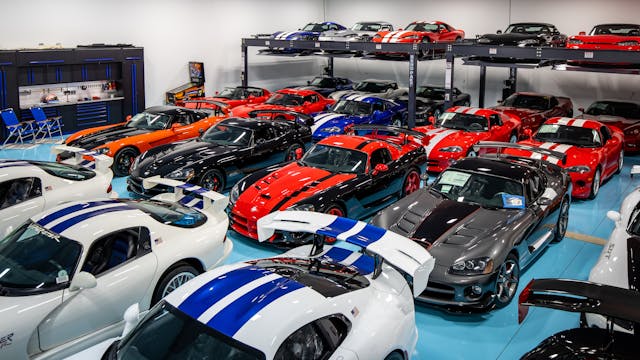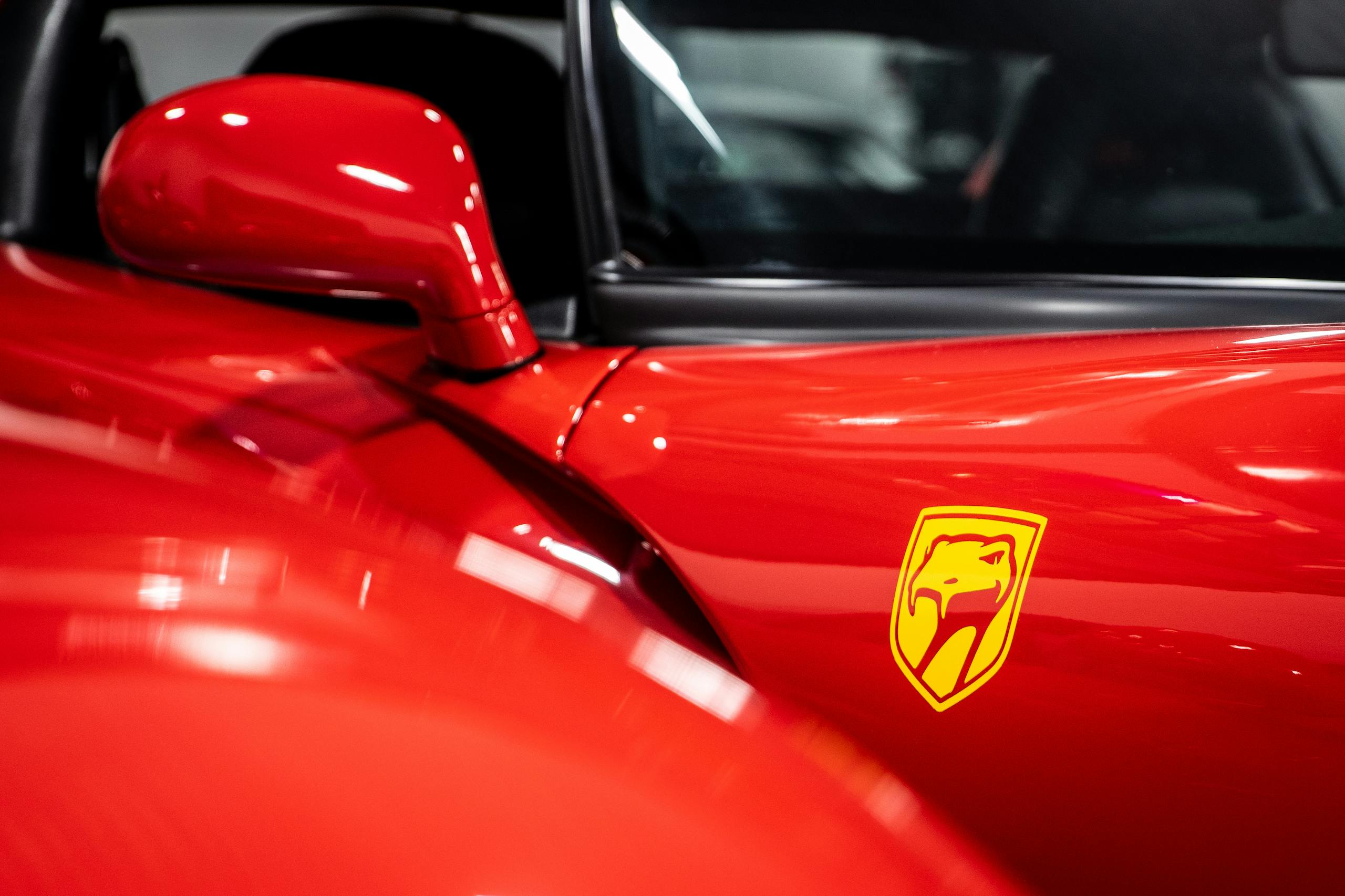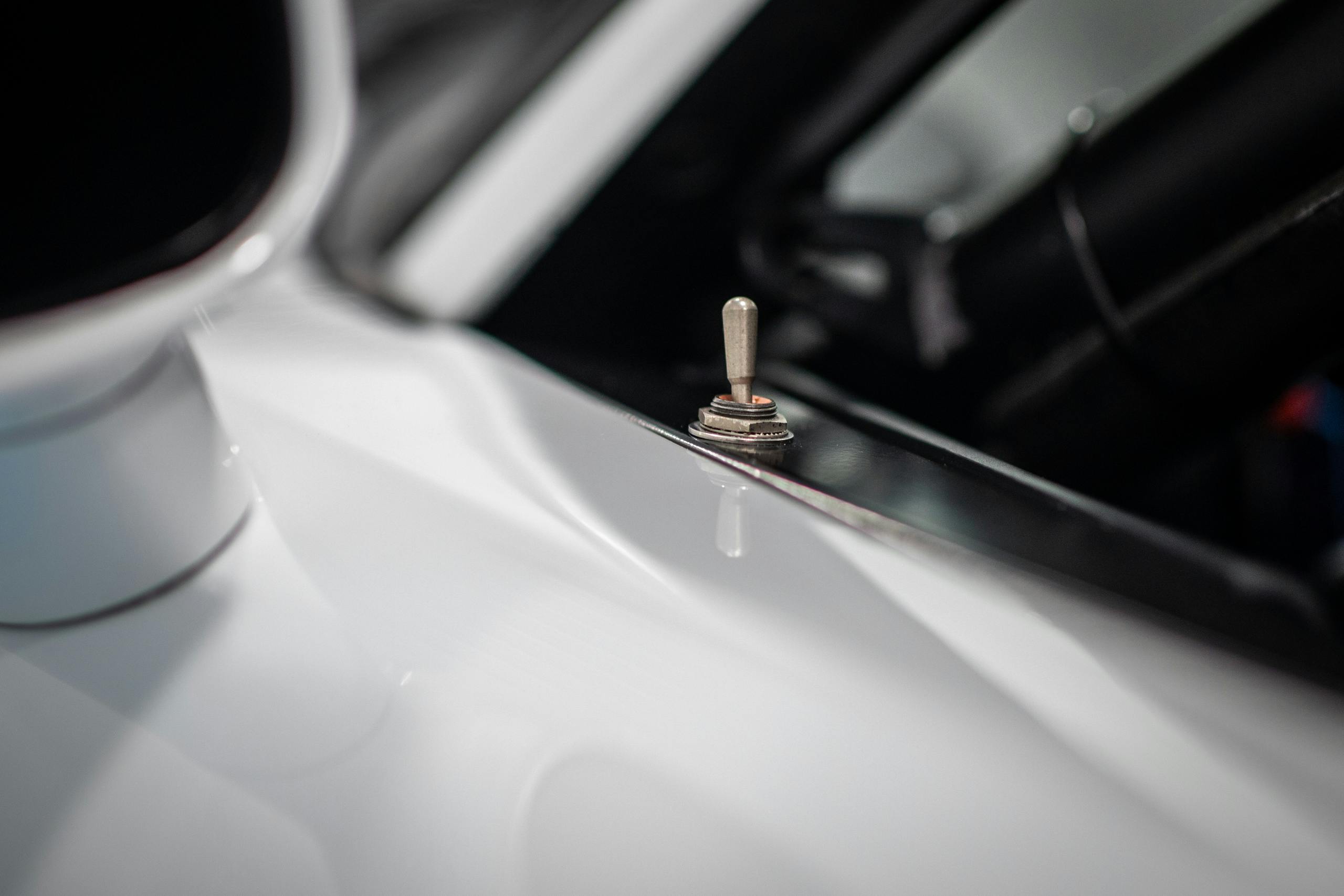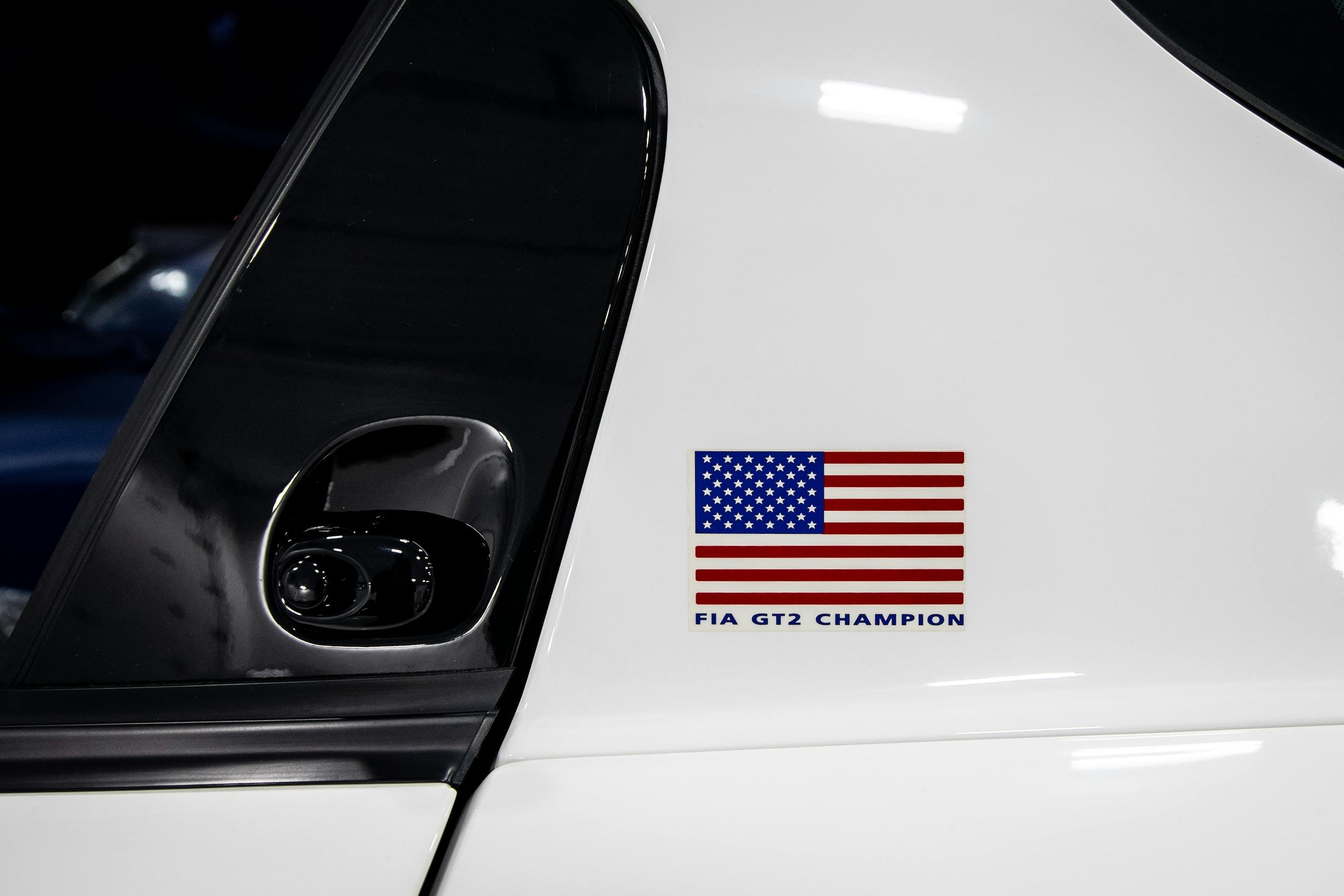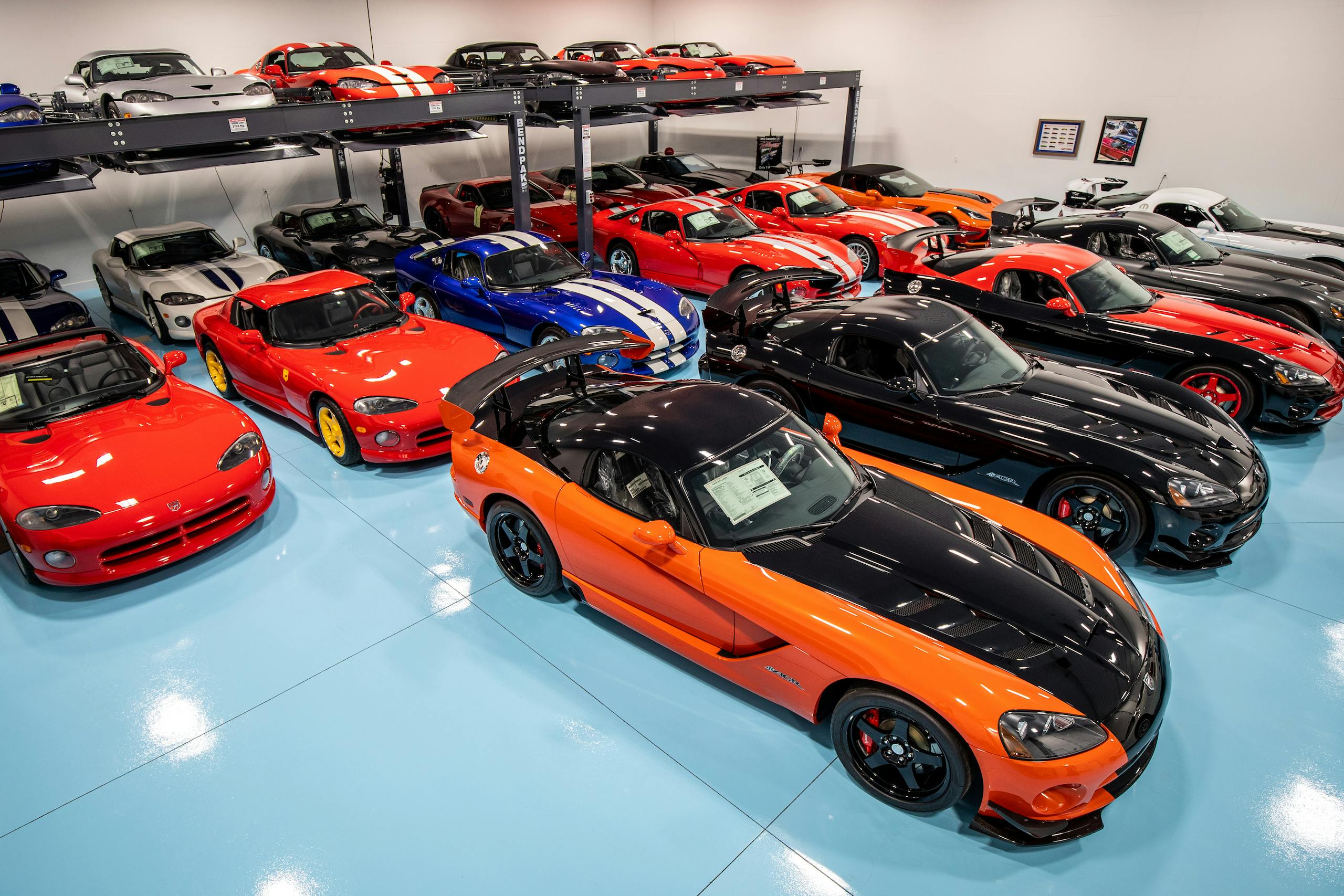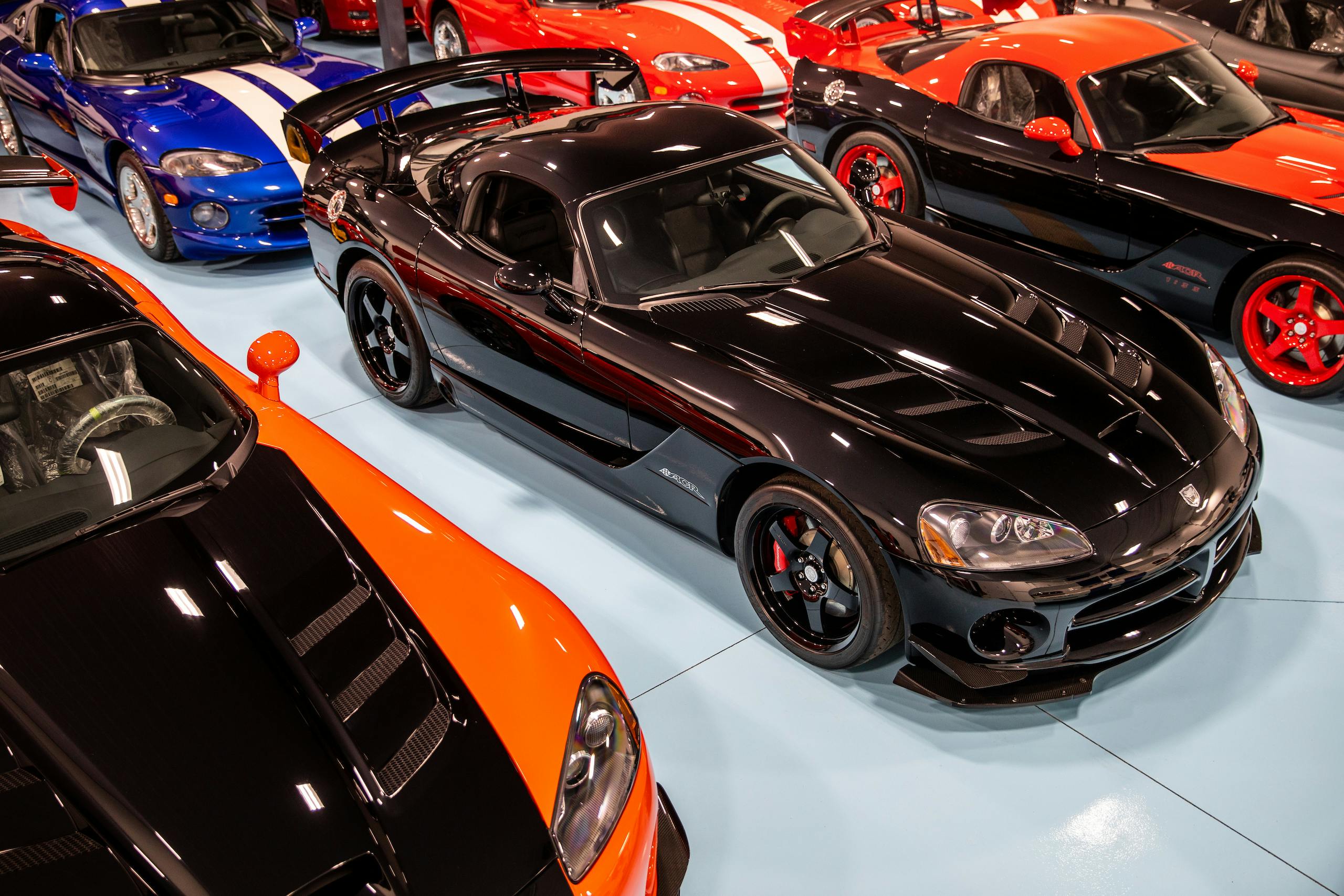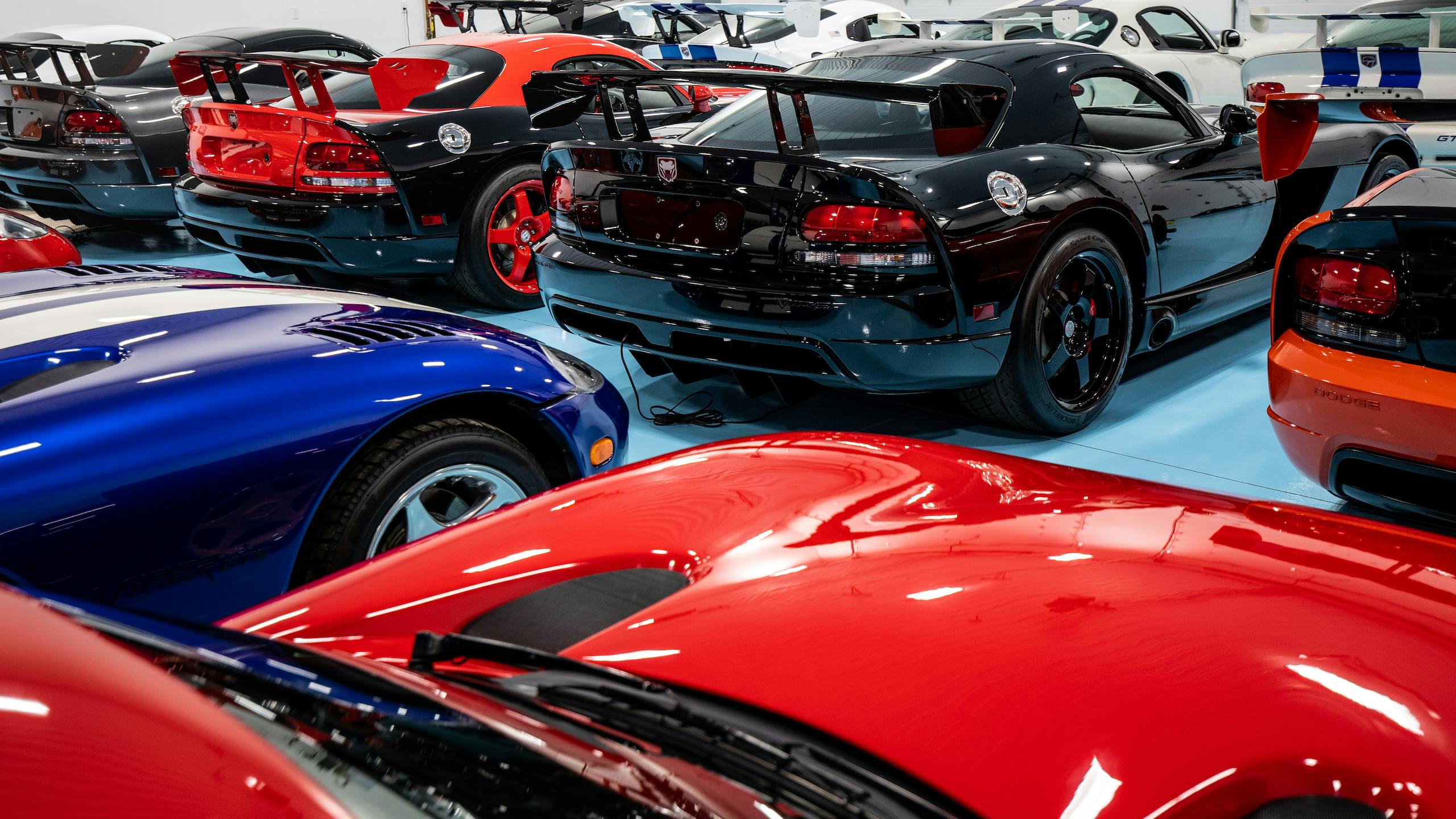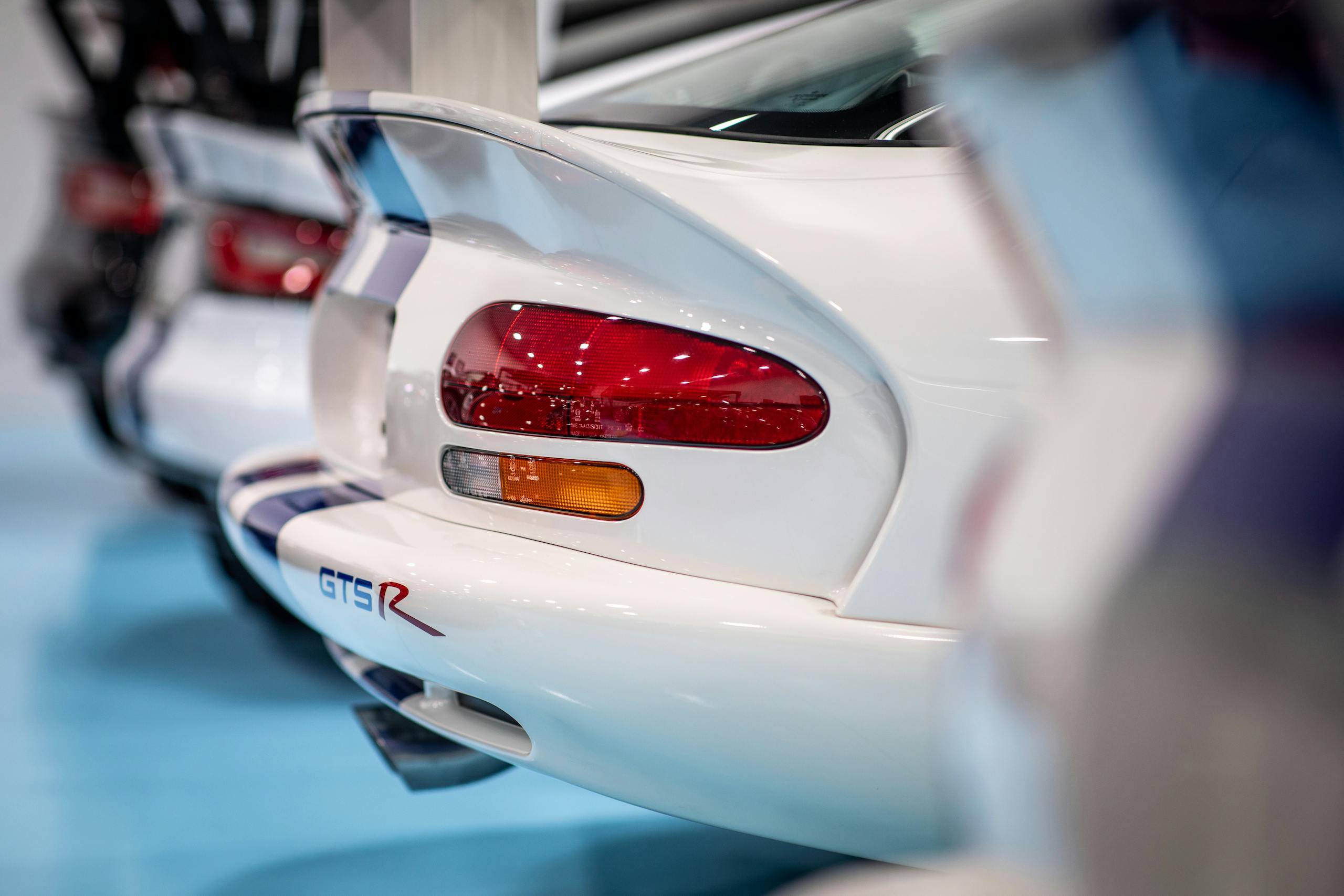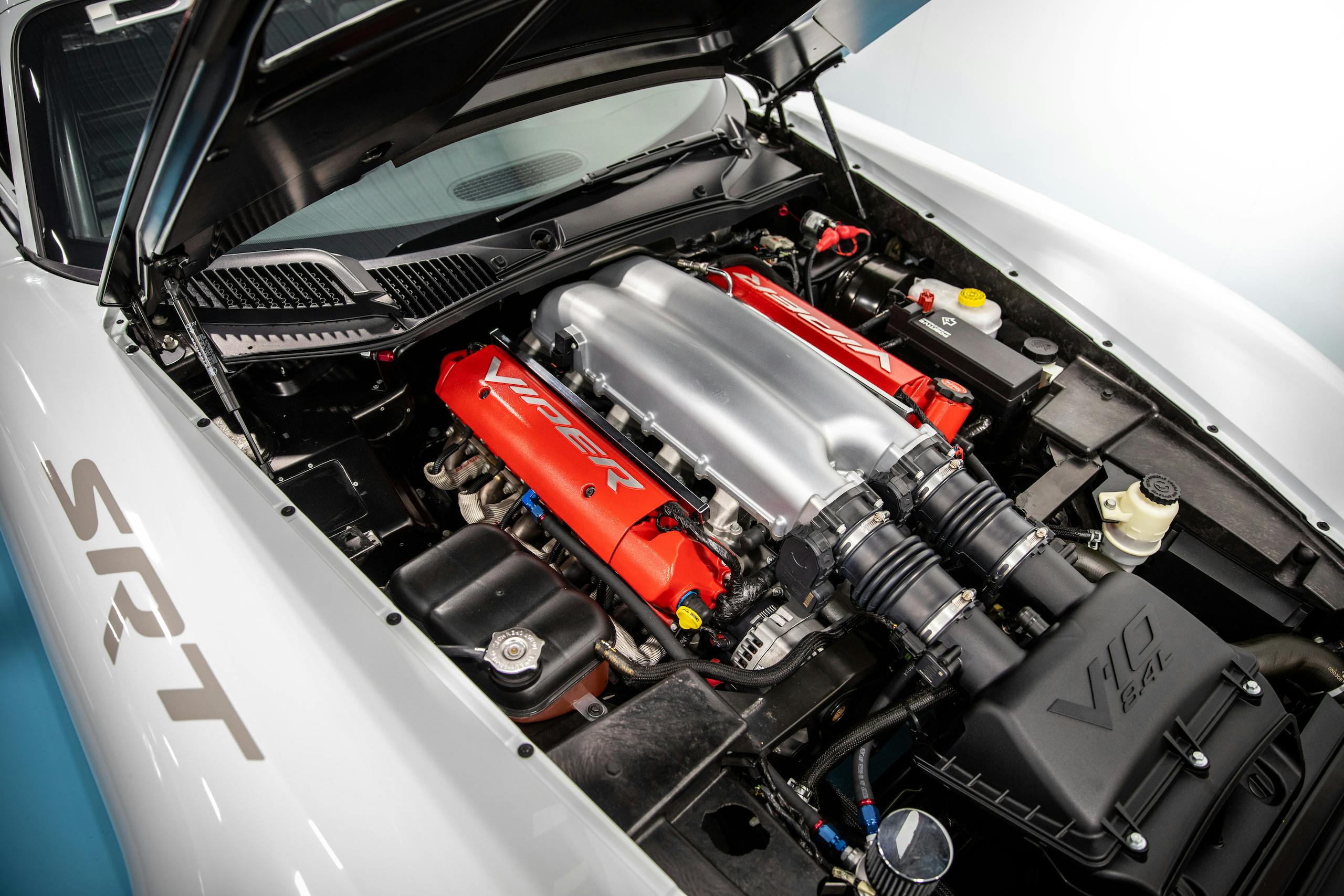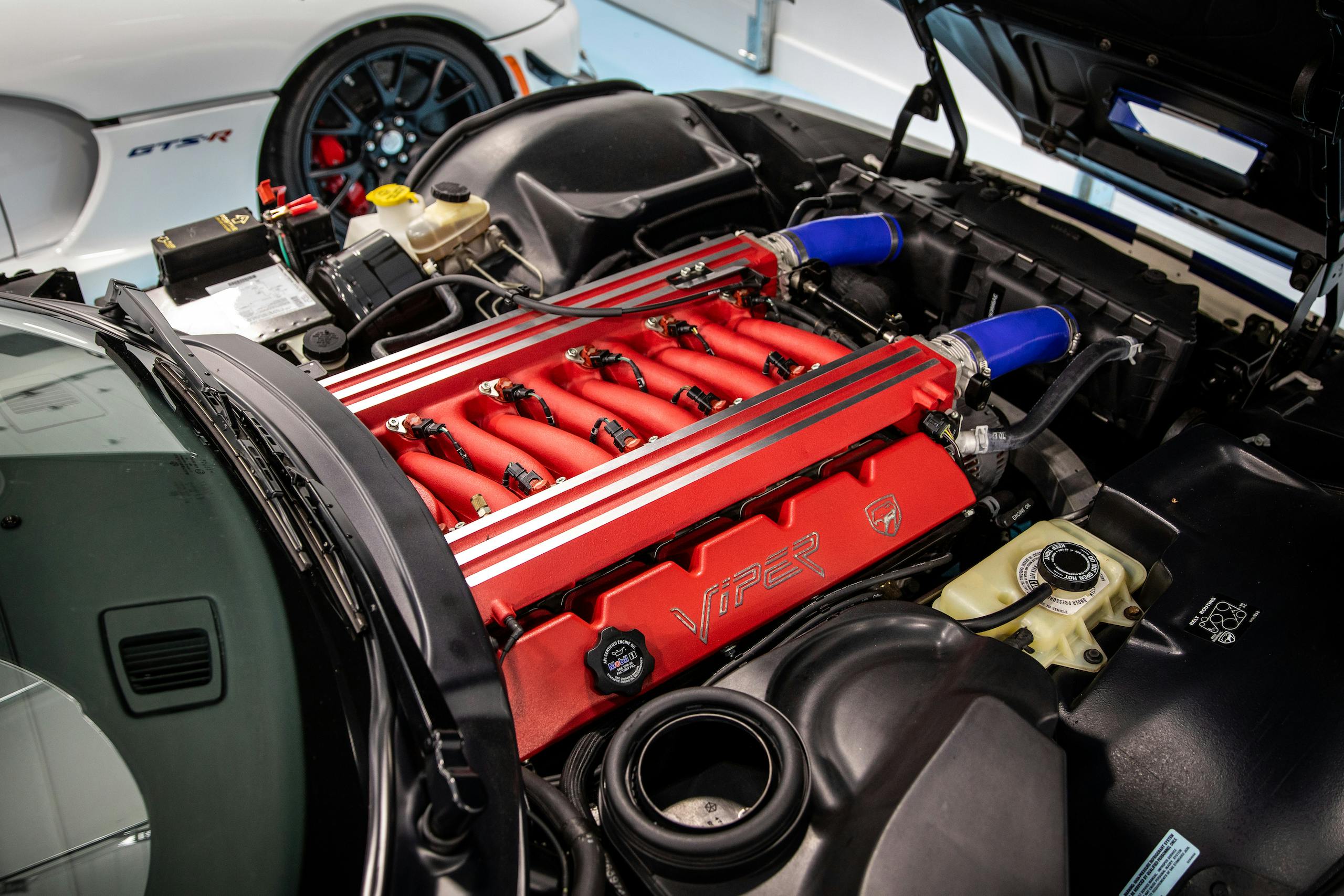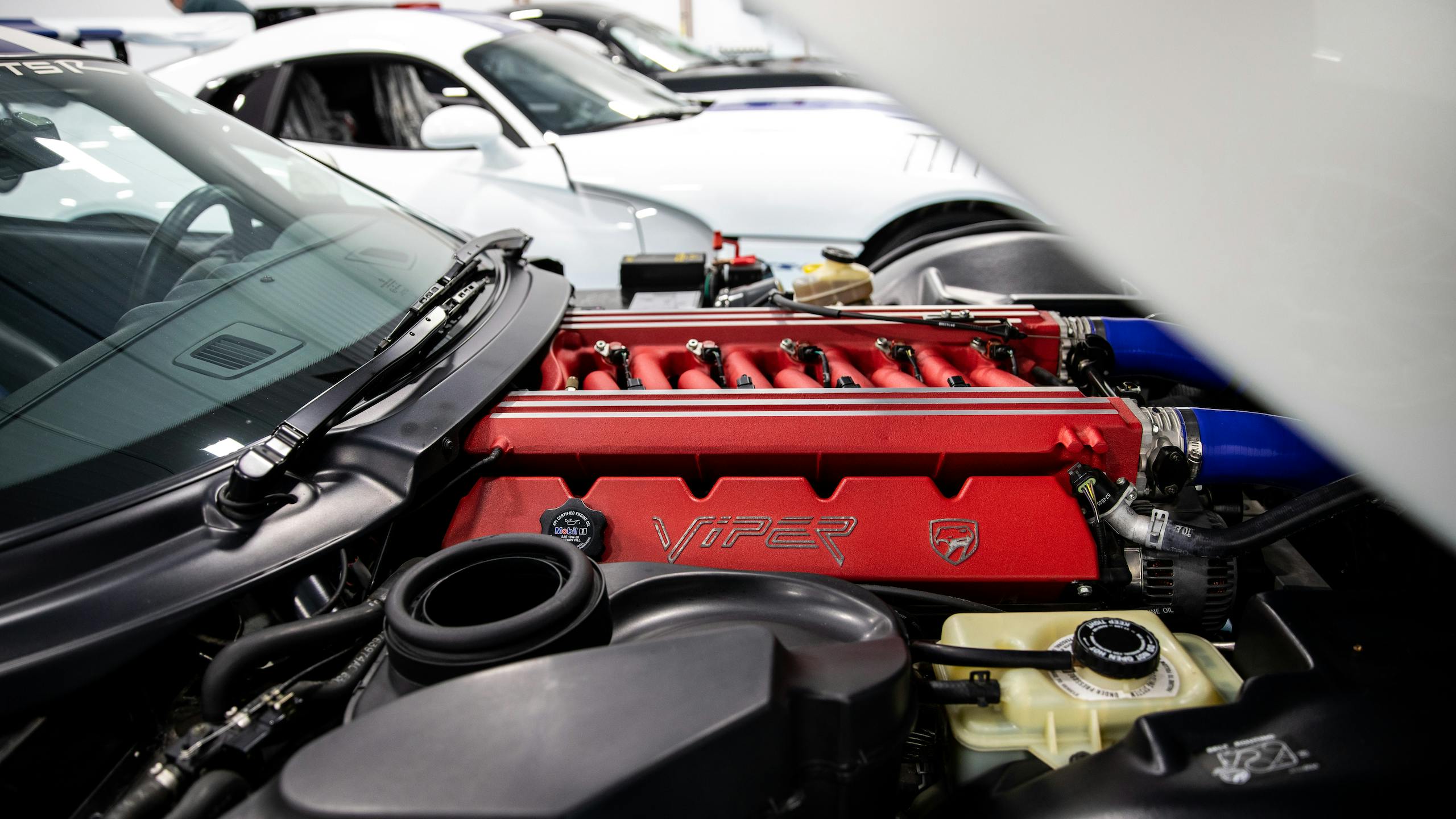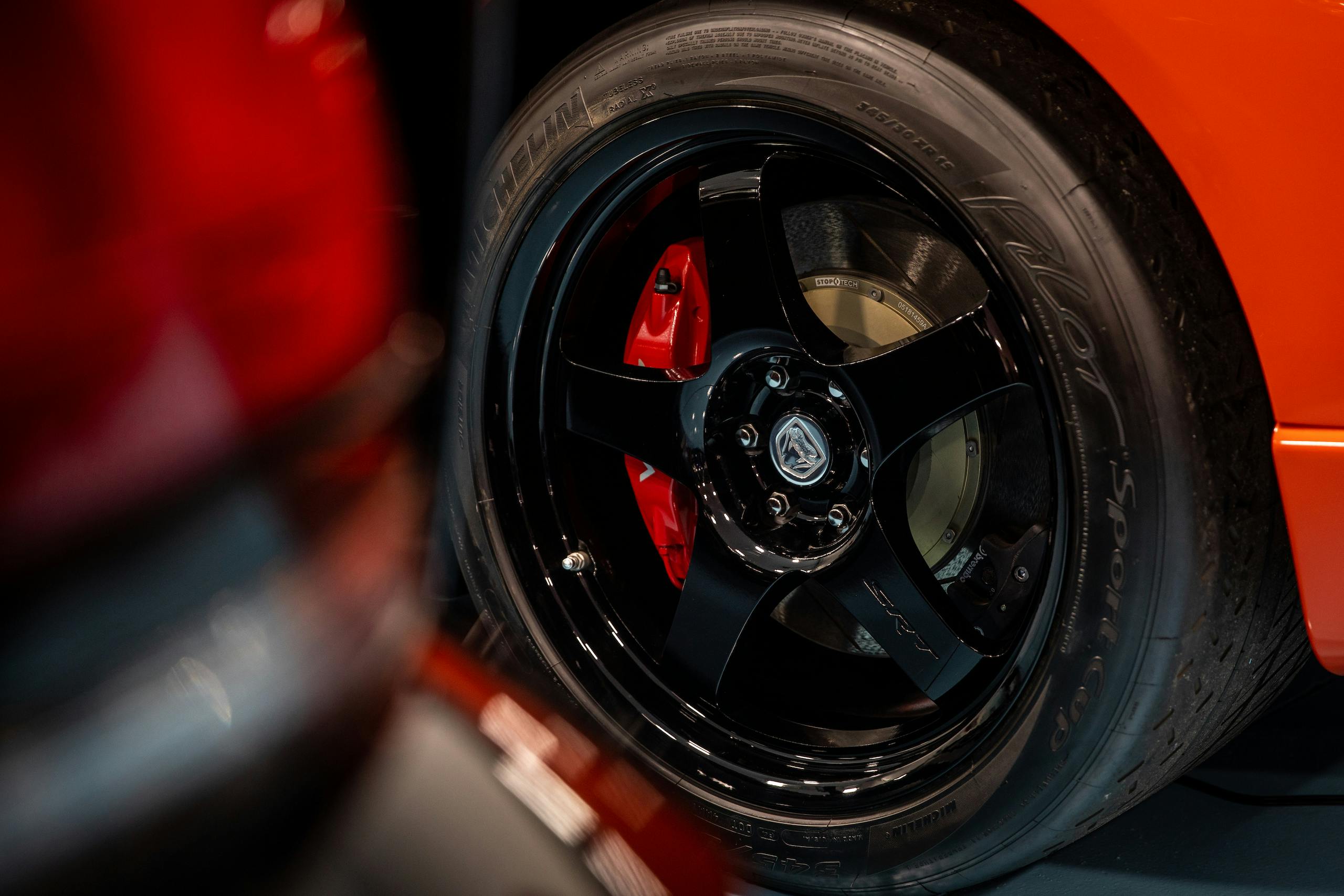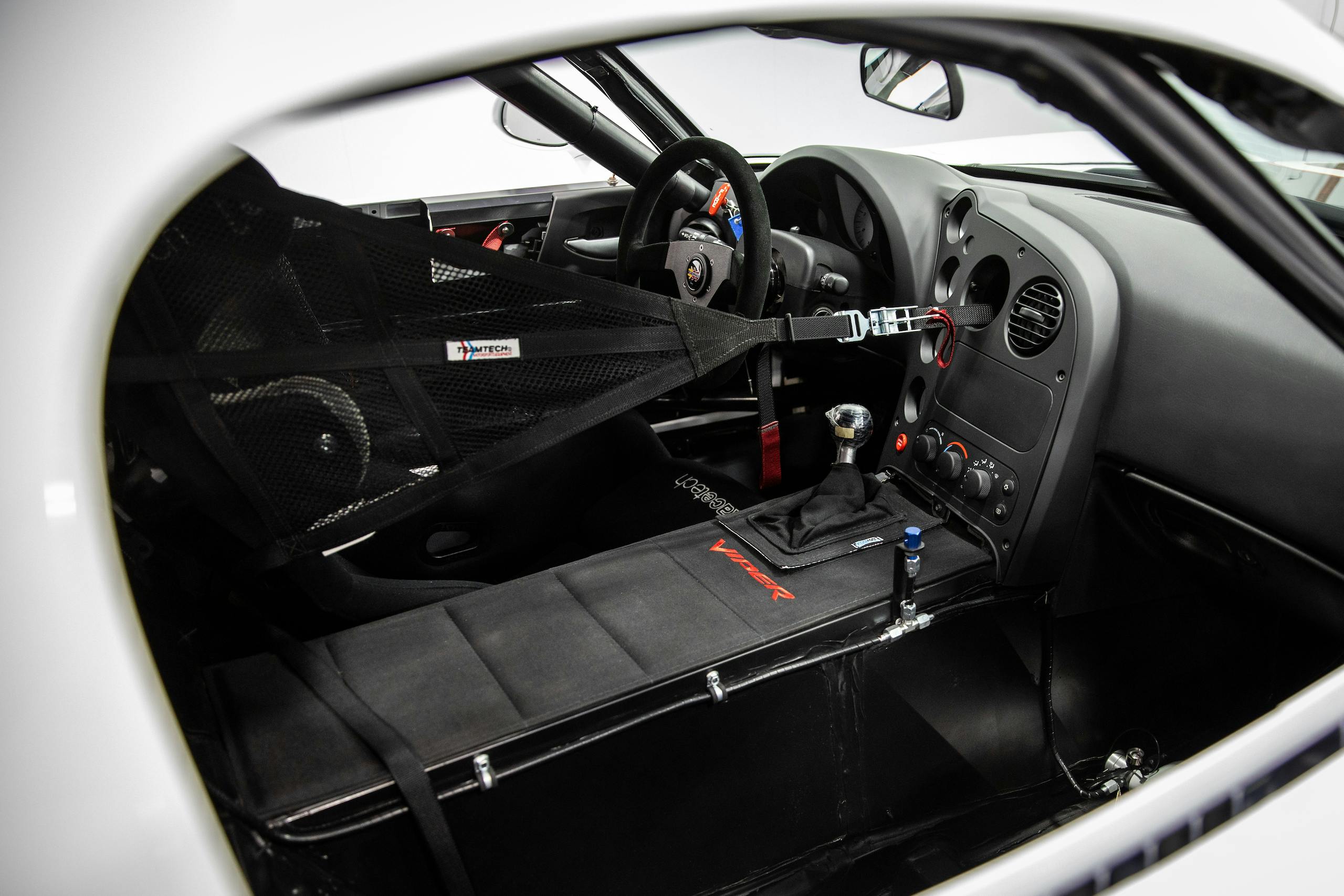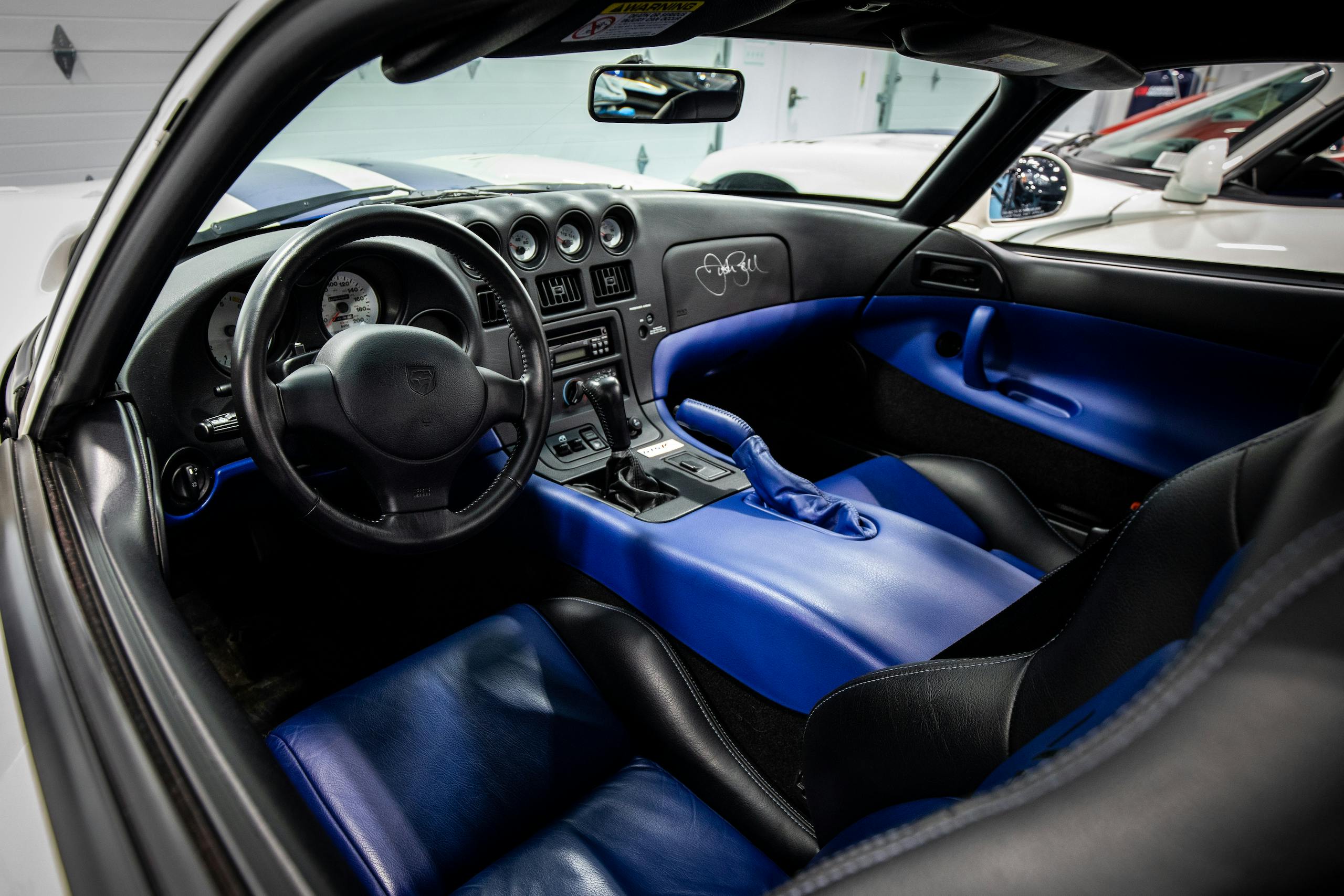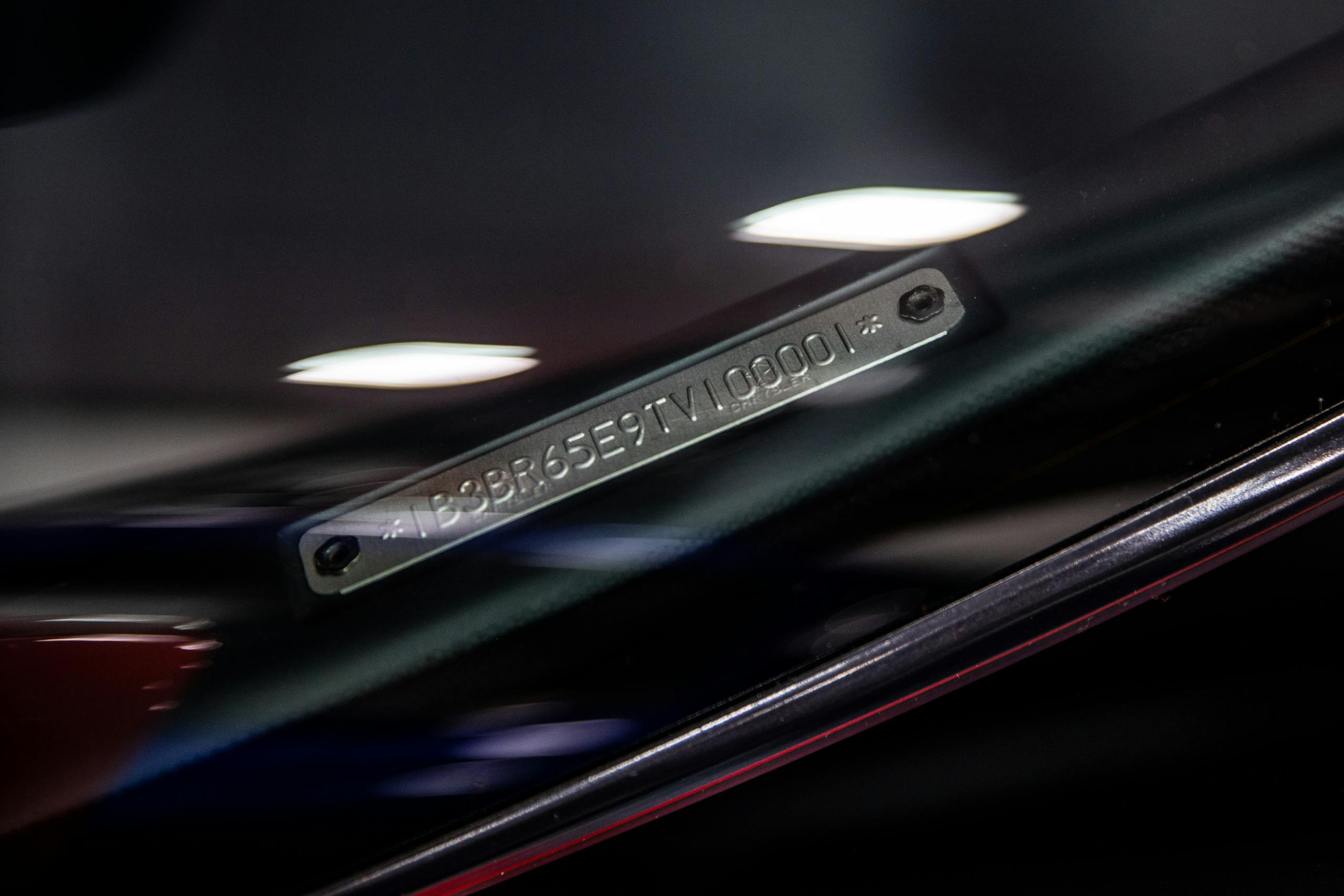Media | Articles
23 and Me: Viper-crazy collector is all for love—and money
Bill Blewett owns 23 pristine examples of Dodge’s super-sports car, parked in rows three-deep under hot-white halogen in a garage kept cleaner than the Pope’s porch. He owns at least one Viper from every generation and seemingly every special edition. They are immaculate time capsules with shifters and steering wheels still wrapped in factory plastic, the tire nubs, warning stickers, and factory paint daubs unworn.
Blewett seems a paradox. A long-haired, self-described ski bum who is wildly talented at investing, he is also obsessed with sports cars that can achieve triple digits but never have. Financial return and preservation of delivery-miles-only vehicles are his motivations. The 64-year-old investor accumulated 22 of his 23 Vipers over two and a half years on a hunch. He made a bet, as any investor would, and so far, his instincts seem good. Lately, Viper values across the five generations have gone astronomical. This summer, a 57-mile 2017 ACR hammered home on Bring a Trailer for $407,000, the highest price we’ve ever seen for a Viper. Many in Blewett’s collection have far fewer than 57 miles showing.

Don’t misunderstand Blewett, though; he bleeds Viper Red. He can recall all the model’s limited runs, the prominent Chrysler employees who developed the car, the good stories, and some individual car histories, all without consulting Google. We visited his static Viper fleet and interviewed Blewett amid the sea of stripes and fangs to learn more about his unique collector perspective.
Hagerty: OK, which one is your favorite?
Blewett: Everybody always asks that question. I really don’t have a favorite. I mean, they’re all special cars in their own right. If I had to choose, I guess it would be the first Viper I ever bought. Back in 2000, I purchased a 1995, Viper Black with a tan interior. It’s up on the lift over there (motions to the back of the building). My neighbor was an attorney representing a man who was caught with another woman and selling the car as part of the divorce settlement. I ended up buying it with about 3750 miles on the odometer, my second collector car ever. And that was the beginning of the Vipers.
Marketplace
Buy and sell classics with confidence
Hagerty: And why Vipers?
Blewett: I was always into cars, but I didn’t have time for them. Outside of work, I spent all my time in the water, competing in water-skiing on a national level for 24 years. My hobby involved staying in shape during the winter, getting on the lake as soon as the ice melted, then skiing in tournaments from June to September. Now, in my retirement, I spend most of my winter on the ski slopes. I didn’t start putting this collection of Vipers together until about two years ago. I first noticed them because I thought they were drastically underappreciated, so I started researching. I developed a plan of what I thought my investment return could be over a 5-, 10-, and 15-year period. Then I broached the subject with my wife. Obviously, you must have buy-in from your significant other because marriage is a partnership. She gave me the green light, I started buying, and the market took off.
Hagerty: So how’s it going?
Blewett: I’m ahead of schedule. I’ve probably already reached my 5-year mark with respect to return, just based on comparable sales in the past year alone. Some of my Vipers have already doubled in value. I’d guess we’re probably 15–20 years away from the peak. By then, I’ll be in my 80s, and it’ll be time to let somebody else take care of the lot.
Hagerty: People will read this and say you’re only in it for the money.
Blewett: These cars are not just investments to me. I love them. Throughout my career, I worked side by side with Chrysler at a scrap metal–recycling business called OmniSource, from the early ’90s through the aughts. I estimate we handled about 95 percent of Chrysler’s scrap in the United States, so I spent a lot of time around the people who worked on the Viper. I thought it was a special car but had no idea that I would end up a big collector. Yes, I love Vipers, but I have a double major from Michigan State, accounting and finance. I’m a numbers guy, and I think I can make one heck of a return on these cars. In my life, I have two goals: make money and have fun. These Vipers allow me to do both, simultaneously.
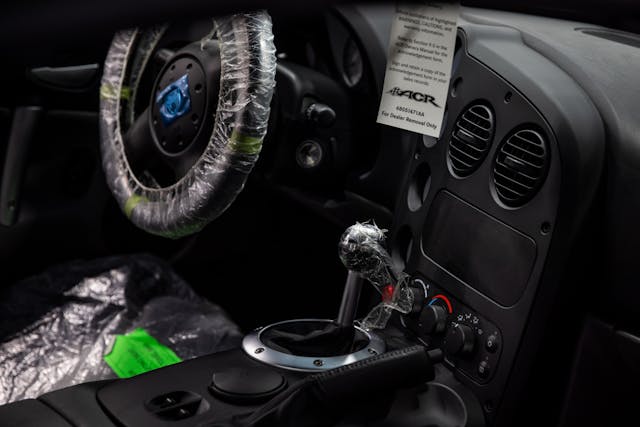
Hagerty: Isn’t it a crime to own 23 Vipers that just sit?
Blewett: Anytime I see a pristine, non-driven Viper in an article or auction, the comments section, without fail, contains cries of heresy. Well, those people don’t understand the car collecting business—not from the perspective of enjoyment of owning the car and driving the car, but strictly as an investment. I’ve heard [Hagerty Price Guide publisher] Dave Kinney warn prospective buyers to never buy a car as an investment; that they should buy one to enjoy, and if they make money on it, great. That’s fine, but there is the ability to make money in the car market just like there is in any other asset market. I’ve had plenty of tire-burning fun in my Vette for less money. If I want to spend $100 or $200 or $300,000 for a car that I think is going to be worth a million dollars someday, I’m not going to hurt the value. I’m buying it strictly for financial gain, plus the joy of looking at it all. I mean, I get pleasure out of coming in here and sitting. Though, of course, I don’t come out here to simply sit. I have to do all my own maintenance on these cars, including starting them routinely. Now, with synthetic oils, it’s not like you have to change the oil every year in these cars, but you’d be surprised how much time and effort it takes to care for all of them.

Hagerty: Why are Vipers only now having their moment?
Blewett: The thing about the Viper is that Chrysler made them over a period of 25 years. During that time, they built only a little over 30,000 cars. They make that many Corvettes in a year. These are rare cars, and they’re really going to come into their own as they start pinging the radar of non-marque-specific collectors. I’d like to think we’re only in the second inning here.
Hagerty: So what does your wife say now?
Blewett: Honestly, she couldn’t care less, but she likes to see the pleasure I get from collecting. She’s been to the Viper garage a few times, but she doesn’t hang out here like I do. Her biggest qualm is a hypothetical. She’ll ask: “Bill, what if you get killed in an avalanche? I need your collector friends’ phone numbers, so if you die, I’ll know what to do with these cars.”
1996–2002 Dodge Viper RT/10 and GTS sales

Vipers have long been coveted by a small group of dedicated enthusiasts who tended to know exactly what the cars were worth. Generally, that meant about $50K for a really good one. Until, one day, it didn’t. We saw our first six-figure sale of a base Viper (that is, not a limited model like the ACR) in early 2020. Now, $200K isn’t far off.
